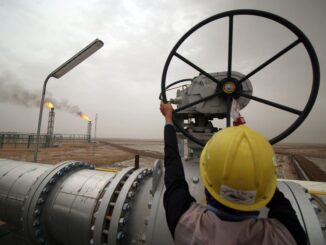
- Saudi Arabia has been spending heavily both abroad and at home.
- As a result, last year, the Public Investment Fund’s cash and treasury assets slimmed from over $105 billion in 2022 to some $37 billion as of September.
- Perhaps the decline in sovereign wealth fund money was part of the reason why Saudi Arabia announced earlier this month it would cancel a planned oil production capacity expansion.
Last year, Saudi Arabia’s sovereign wealth fund became the world’s top spender, accounting for a quarter of the $124 billion that sovereign wealth funds invested in total.
Saudi Arabia has been spending heavily both abroad and at home—the home of the world’s megaprojects, such as the $500-billion futuristic Neom project and a whole new airline, among others.
As a result, last year, the Public Investment Fund’s cash and treasury assets slimmed from over $105 billion in 2022 to some $37 billion as of September, according to official Saudi data cited by the Wall Street Journal this week. It’s getting harder to keep up with all the megaprojects—and oil prices remain stuck at around $80 per barrel.
Saudi Arabia has tried its best to prop oil prices up and keep funding its ambitious Vision 2030 program—Crown Prince Mohammed’s plan for turning Saudi Arabia into a diversified economy. There is nowhere else this money can come from except oil. The kingdom is stretching itself thinner and thinner.
Perhaps the decline in sovereign wealth fund money was part of the reason why Saudi Arabia announced earlier this month it would cancel a planned oil production capacity expansion. Energy minister Abdulaziz bin Salman cited plans to redirect investments to other areas of Aramco’s business as one reason for the decision and intentions to invest more in the energy transition as another.
Bin Salman also noted that thanks to the current production curbs, there is a pretty soft cushion of around 3 million barrels in spare capacity in case supply suddenly tightens elsewhere. But whether the Saudis would really use the capacity cushion in case of a supply disruption is quite another question. When you’re up to your neck in projects whose total price tag is well over a trillion dollars, letting a good supply disruption go to waste would be inadvisable.
Earlier this week, Aramco issued its latest grim warning about the state of global oil production capacity. We are losing 6 million bpd in production every year due to natural depletion and inadequate reserve replacement behavior. This has resulted in such a drastic decline in spare production capacity that it now equals 3% of global demand, the company’s chief financial officer said.
The Saudi state energy major has been warning for years that the global oil industry needs to invest more in new exploration and future production, but transition pressure has discouraged a lot of that, leading to the current state of affairs that, if OPEC demand forecasts are the accurate ones and not the IEA’s, is a ticking time bomb that will explode.
When it does, Saudi Arabia will finally get the oil price it needs to keep spending billions on turning an oil-focused economy into a diversified one. The question is how long it would have to wait for that bomb to explode and what it would do in the meantime. For now, it seems the Saudis are taking to debt markets.
Last year, the Public Investment Fund issued debt twice—one $5.5-billion bond, and a green bond no less, in February, and a dollar-denominated sukuk in two tranches for a total $3.5 billion.
Saudi Arabia also issued a $12-billion bond in January this year, which was heavily oversubscribed, with orders hitting $30 billion.
Aramco is also issuing debt this year, and although the size of the offering has yet to be disclosed, the company will seek longer maturities, its CFO told Reuters. Aramco also plans to sell stock, Ziad Al-Murshed said.
Debt is certainly one way to keep funding the kingdom’s transformation projects. With the prospect of rate cuts on the horizon, debt markets would certainly begin looking a lot more tempting than they did over the past two years. More borrowing may be on the way.
Meanwhile, higher oil prices may also be on the way if projections of much weaker U.S. production growth turn out to be true. Originally, the basis for these projections was made up of the latest monthly trend in production gains, which was a slowdown.
Yet a series of major acquisitions in the space last year are now likely to have their own impact on production trends as more production in the shale patch becomes concentrated in fewer hands. If prices are not to the taste of those with the hands, production won’t grow as strongly as it did last year—until prices go up to more satisfactory levels.
Saudi Arabia has a lot of big plans. The WSJ report cites projects such as EV manufacturing, a whole new e-sports and videogame industry, and a major—and expensive—boost for local soccer. These plans would need really big money if they stand a chance to materialize. And the kingdom is ready to go to great lengths to make these plans materialize.
By Irina Slav for Oilprice.com
ENB Top News
ENB
Energy Dashboard
ENB Podcast
ENB Substack



